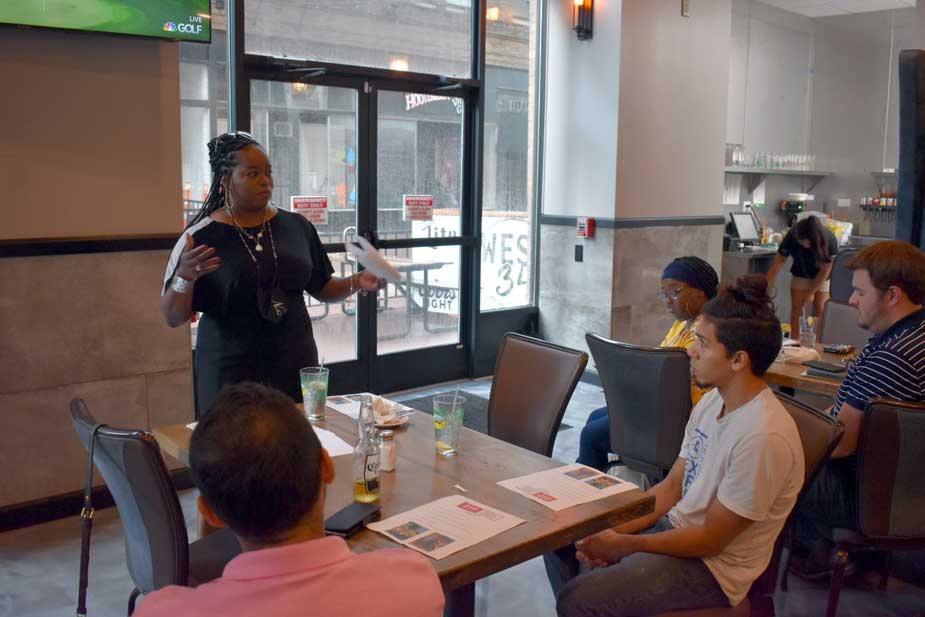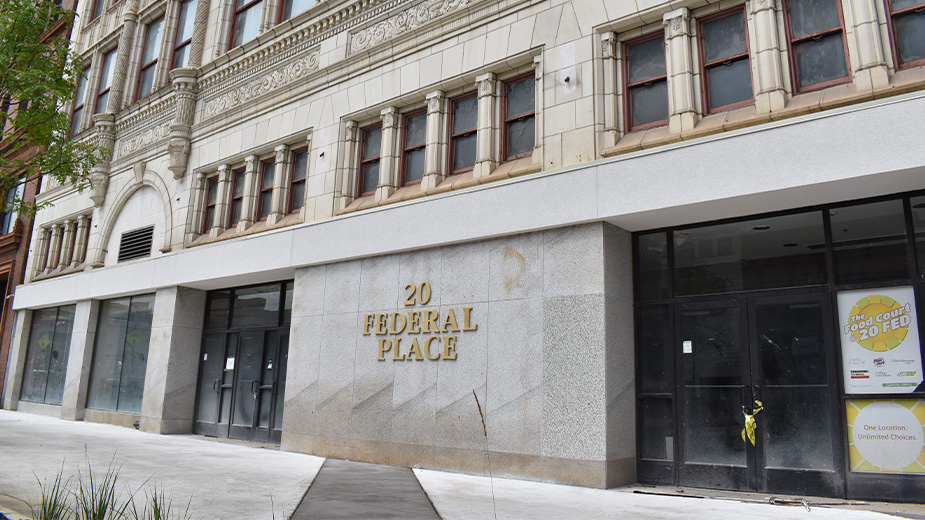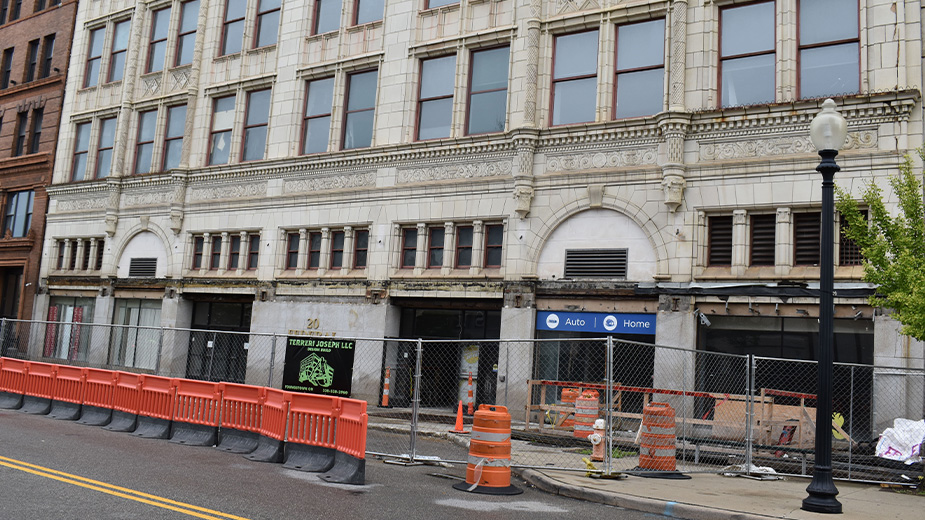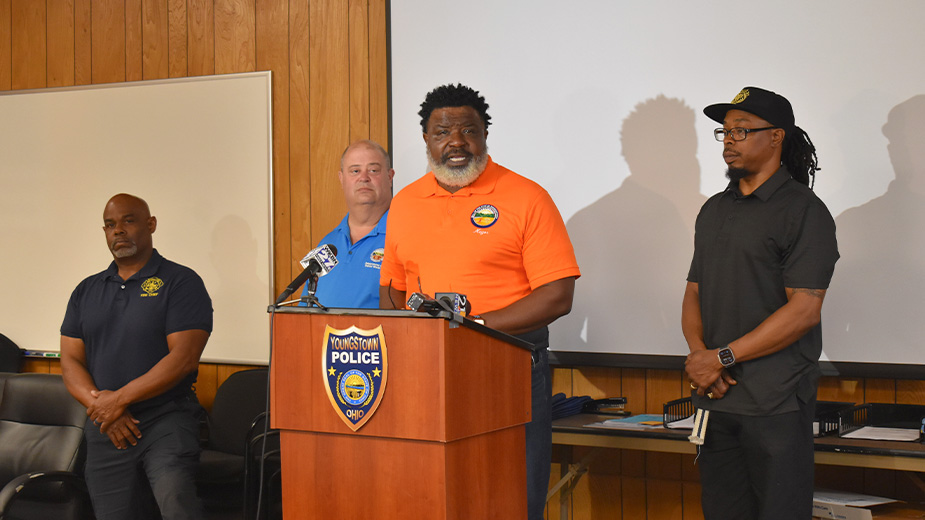American Rescue Plan | Violence, Housing Top Priorities for Downtown Residents
YOUNGSTOWN, Ohio – Nikki Posterli, chief of staff to Mayor Jamael Tito Brown, urged downtown stakeholders Thursday to come together to identify priorities for how they would like to see funds from the American Rescue Plan directed to address their needs.
Posterli, who also is director of the city’s community planning and economic development department, spoke on the city’s planning for use of the $82.7 million in ARP funds that the city is receiving during a meeting of Downtown Youngstown Partnership, a committee of Youngstown CityScape that promotes downtown businesses, networking and community service projects.
The money, which the city is receiving in two installments, puts the city in the position of being proactive and not just applying bandages to problems that arise, Posterli said.
“One of the things I’m most excited about is that we finally have the money to do something. We spend so much time being reactive to everything and putting out little fires,” she said. “Now we can do neighborhood and community projects.”

So far, community and youth violence prevention is the top priority identified by city residents and stakeholders, reported Nick Chretien, program manager for Economic Action Group, which is assisting the city with data collection. A close second is addressing housing, neighborhoods and commercial corridors, followed by utilities and infrastructure.
As of Thursday, the city has received about 400 responses to the online survey on the city’s website, he said.
The city is permitted to spend the ARP funds in four specific areas – infrastructure, revenue replacement, essential workers and business stabilization and growth – but she hoped that the city would be able to get money from the recently passed federal infrastructure bill so the ARP funds could be used to address other priorities.
That $82.7 million allocation “sounds like a lot of money until you start putting projects together,” she said.
Next week, the city will hold the last of a series of listening sessions that are being held in each of the city’s seven wards, Posterli said. Those will be followed by a pair of sessions targeted at getting input from the city’s young people – one for ages 12 to 18 and a separate one for ages 19 to 35 – and a third one for senior citizens.
In addition, the city began accepting proposals in May for specific projects through its website. So far, 28 proposals have been submitted, and Posterli encourages the downtown stakeholders to collectively state their priorities.
“Come together and tell us what you need. The more voices that come together, the stronger the application is going to be,” she advised the downtown group. “If you all come together with a collective plan on how you want to use the money, it’s easier for us. We don’t have to start picking and choosing what business gets what.”
Downtown Youngstown Partnership has scheduled a meeting for Aug. 26 at CityScape’s offices to do just that, said Ellie Platt, co-chairwoman of the organization. She invited downtown community members to potential projects that DYP could submit proposals for, as well as to assist participants with their own applications.
“One of the biggest goals of this group is about having a unified voice,” Platt said. If the group comes up with a “collective idea” for downtown to submit, “it’s going to be stronger if we do it together,” she added.
Among the other topics discussed at the meeting was a persistent concern: parking. The city is reviewing four responses to a request for proposals it received for technology options and a strategy to address the issue. Proposals include options such as new meters, which people could pay for parking by using a credit or debit card or that transfer unused credit when a vehicle is driven from one spot to another.
Though parking is often cited as a downtown issue, a study conducted by EAG found just 53% of downtown’s parking capacity is utilized at peak, Chretien said.
The same people who complain about walking to a venue from a parking spot in downtown Youngstown will be “cheering and smiling” while walking a far longer distance to an event in Cleveland or Pittsburgh, mocked Chris Davis, co-owner of West 34, where the DYP meeting was held.
“We’ve got parking and its safe,” First Ward Councilman Julius Oliver said.
The distance from the Jimmy Johns restaurant near Youngstown State University to the Covelli Centre downtown is the same as the distance from the Southern Park Mall to its back parking lot, Platt said. People who come downtown from the suburbs and aren’t familiar with it often don’t know where to park, Platt said.
Pedestrian directional signage that EAG also is working with the city on for the downtown will provide information about available parking as well as downtown venues, Chretien said.
Additionally, the group heard from Jason White, owner of 924 LLC, a local marketing firm. He pitched a plan drafted in conjunction with downtown bar and restaurant owners to promote their businesses and capitalize on the people who come downtown to attend events at venues such as the Youngstown Foundation Amphitheater and the Covelli Centre.
“When people come downtown, they don’t stay at one spot,” he said.
“The object is to give downtown an identity,” Oliver said.
Pictured at top: Jason White, owner of 924 LLC, First Ward Councilman Julius Oliver and Ellie Platt, owner and president of Platt Insurance Group and co-chairwoman of Downtown Youngstown Partnership, discuss ideas for American Rescue Plan funding with residents.
Copyright 2024 The Business Journal, Youngstown, Ohio.



